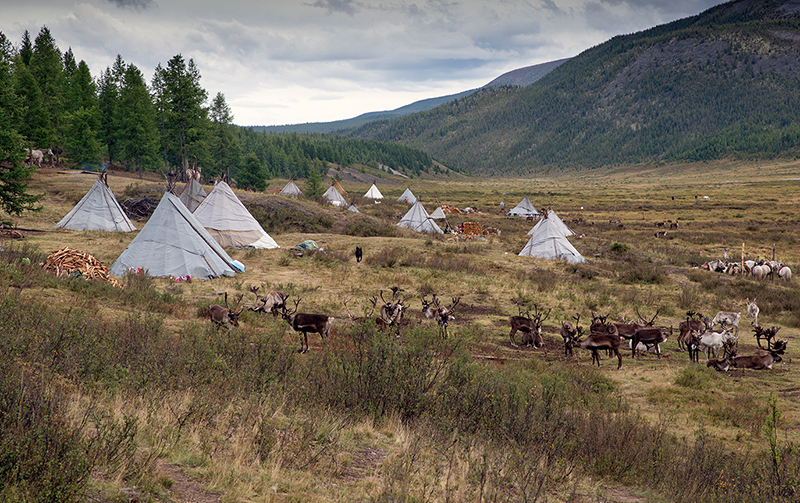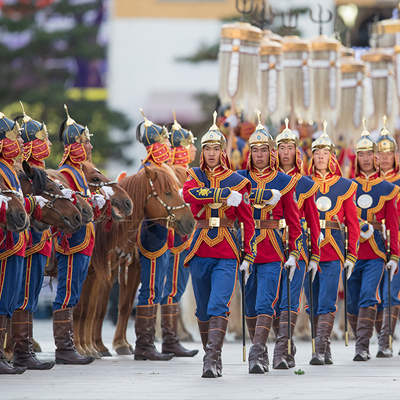
Mysterious World of Shamanism in Mongolia
Most of tourists travelling in Mongolia are interested in the religion and freedom of faith and worship. And some travelers choose our tours to Buddhist monasteries and places where Shamanic tradition is well reserved. Our guides are always happy to explain about the religions in Mongolia, especially, our primitive religion Shamanism.
About Mongolian Shamanism
Mongolian Shamanism is one of oldest religions and beliefs. It has been developed on the basis of the belief in totemism or animism and dated back to 300 to 400 BC. The Huns, ancestors of Mongols, worshiped shamanism and it was the main religion of Hun Empire. The word shaman (böö / бөө) is a common noun that can be divided in two categories: a male shaman (büge / бөө / зайран) and a female shaman (idugan / удган). Hun and Mongol people worshiped the sun and the moon, and made sacrificial offerings to the heavens, the earth, spirits, and their ancestors.

Shamans are people who have visions and perform various deeds while in a trance and are believed to have the power to control spirits in the body and leave everyday existence and travel or fly to other worlds.
Types of Mongolian Shamans
Shamanism is still practiced by Mongols and practiced by minorities such as Tsaatans, Darkhads, Uriankhais (Tuvans) and Buryats. Darkhad is one of the ethnic groups indigenous to northern Mongolia, next to the Russian border. Numbering some 20,000, the Darkhad have largely preserved their traditional nomadic lifestyle.


Buryats are the largest indigenous group in Siberia. As they are people of Mongolian origin, they practice Tibetan Buddhism with animist and shamanist elements. Buryat shamans are still very active. In Mongolia both men and women can be shaman. But, the distinction is made between hereditary ones.


Worship of Mongolian Shamanism
The main rite of Mongolian shamanism is to worship and sacrifice heaven. Shamanism venerates the blue sky and green earth. Mongolian shamanism has 55 deities (Tenger or Tengri) of the west who are well disposed towards humans and 44 deities (Tenger or tengri) of the east who cause all misfortunes. Mongolian Shamanism worships 99 deities, in total. These deities protect the clans or tribes, including individual persons, before the power of nature. In Mongolian shamanism, there are water spirits (lus), and mountain spirits (savdag), as well as souls and amulets.

Shamanic Rituals In Mongolia
Shamans invoke the shaman’s ongon, which serves to support good deeds and to chase away evil spirits, and make the connection with superior spirits. Mongolian shamans have magical ability in exorcising evil spirits. Devotees believe that the ongon of spirits can drive out misfortune, illness, and evil spirits with the guardian power of shamans.

Rituals are the main elements of Mongolian shamanism and play very important role in its practices. There are two important entities that shamanic rituals seek to invoke or influence. The first is the White Heaven, which controls everything in the westward. The other is the heart shaped Black Heaven, which controls everything in the eastward. The shamanic rites seek to invoke the ninety-nine deities, to whom offerings are made.

There are also the mountain-rites, cairn-rites which are related to the traditions and rituals of worshipping the earth as Mother. Together with them, there are the fire–rites, ancestor-rites, saddle-thongs rites, destiny rites, and horse-rites. There are also the entrance-rites and lightning-rites. Shamanic rites assume that nature has godliness. Shamans use the rites to get into contact with this godliness, which occurs while the shamans are in a trance.
Offering for Superior Spritis / Ovoo tahilga in Mongolia
Mongolians celebrate the ritual of worshipping fire and perform them according to the established rules. The statement, invocation, and benediction of worshipping fire were orally transmitted.
The rituals of mountain and cairn worship (ovoo tahilga) were originally shamanic, but they were developed with the notions and teachings of Buddhism and concepts of nature and the universe. This ceremony involves invoking the spirits of the mountains and water to please and express our requests to them. Ovoos are usually built on the top of mountains. Most of them are piles of stones. Some are enclosed and built with wickers and filled with sand and soils.


Several poles and branches are stuck into the the top of the ovoo, with all colors of flags and silk lists hanging on them and strings tied between them and the ground. In the ovoo are food such corn, bows and arrows, and Budda figures. The size ovoos can be different. Most of them stand alone, but there are sometimes groups, consisting of 7 or 13 ovoos, with the main one in the center, larger than the others.
What Mongolian Shamans Do?
Modern shamans are considered as exorcists, prophets, fortune-tellers, medicine men, healers and interpreters of dreams. Traditional medicine has always been important in Mongolia and Siberia. Herbalists, healers and their traditions vary from tribe to tribe and from region to region. Despite these small differences, healers were always an important part of society.

Shamans are viewed as bridges between their communities and the spiritual world. During their trances, which are usually induced in some kind of ritual, shaman seek the help of spirits to do things like cure illnesses, bring about good weather, predict the future, or communicate with deceased ancestors. Before making important decisions many Mongolians consult a shaman. They make an offering of meat, sweets and vodka and the shaman conducts a ceremony.
Can Tourists Meet Shamans in Mongolia?
During the tours, sometimes we have occasions to assist Shamanic rituals. If our clients are interested to assist those rituals, our team, guides and drivers will ask permission to assist rituals or visit shamans.
If you are interested a real Shamanic experience in Darkhad valley and taiga, we have a tour “Mongolian Blue Trail to Spiritual Shaman Tour”.











.jpg)









_BLOG.jpg)
























